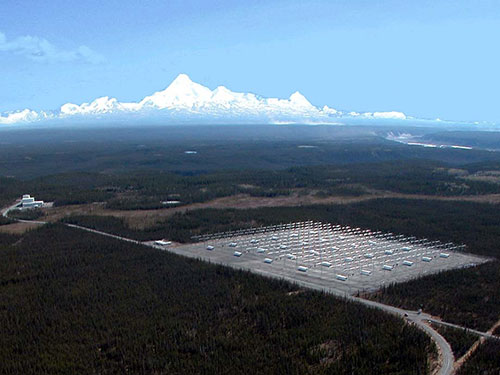
Murkowski’s HAARP Fight Keeps Wrecking Ball Away for a Year
July 09, 2014
HAARP Project: Gacona, Alaska
In response to Senator Murkowski’s reasoning, the Secretary of the Air Force sent a letter stating: “Your letter indicates the University of Alaska or a consortium of academic or research institutions are interested in taking ownership of the facility in the near future. In response, the Air Force is willing to slow the closure process and defer irreversible dismantling of the transmitter site until May 2015... The Air Force will continue to maintain an open dialogue with the University of Alaska or a consortium of interested scientific research institutions should they wish to develop and assess alternative plans in a timely manner.” The High Frequency Active Auroral Research Program (HAARP) is an ionospheric research program jointly funded by the U.S. Air Force, the U.S. Navy, the University of Alaska, and the Defense Advanced Research Projects Agency (DARPA) Work on the HAARP Station began in 1993. The current working Ionospheric Research Instrument (IRI) was completed in 2007, and its prime contractor was BAE Systems Advanced Technologies. As of 2008, HAARP had incurred around $250 million in tax-funded construction and operating costs. It was reported to be temporarily shut down in May 2013, awaiting a change of contractors. In May 2014, it was announced that the HAARP program will be shut down later in the year. The most prominent instrument at the HAARP Station is the Ionospheric Research Instrument (IRI), a high-power radio frequency transmitter facility operating in the high frequency (HF) band. The IRI is used to temporarily excite a limited area of the Ionosphere. HAARP is a target of conspiracy theorists, who claim that it is capable of modifying weather, disabling satellites and exerting mind control over people, and that it is being used as a weapon against terrorists. Commentators and scientists say that proponents of these theories are "uninformed", as most theories put forward fall well outside the abilities of the facility and often outside the scope of natural science.
Edited by Mary Kauffman, SitNews
|
||
